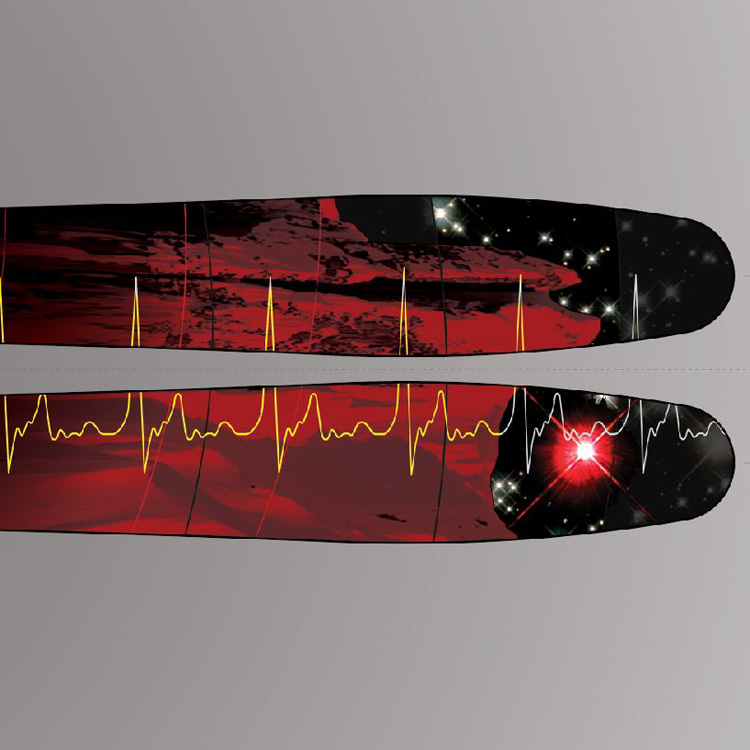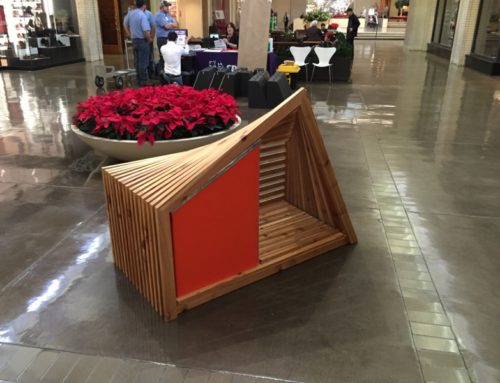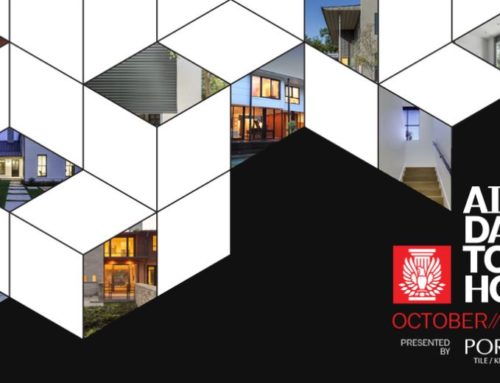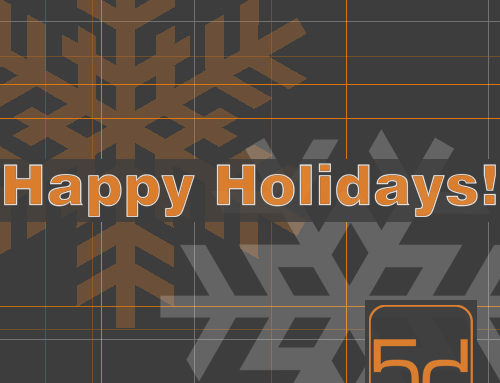I have received a few requests to elaborate on the design process I went through when I came up with the design (image below) for a ski design contest. By the way, this contest is still ongoing as of December 17th…..find it here and vote for my design! Really, the design process I follow is largely the same for these skis as it would be for a house, a building, whatever the program calls for.
First things first, I had to understand the question or problem at hand. I needed to design some seriously cool skis but a great design usually doesn’t just fall from the sky. I had to dig into the problem and get inspired. Luckily, inspiration is all around us. I focused my attention on the emotions surrounding the act of skiing and found some pretty inspiring ideas.
I just recently saw this video on the internet of a skier dropping down into an incredibly tight chute in Alaska and thought “wow that is both crazy and extremely driven” and the light bulb went on for my ski design. Skiing is about pushing yourself to new limits, having a ton of fun, and being out there in nature enjoying the universe around you. Okay, so this is part of my definition – yours is likely different. I was solving my own design problem so the emotions and solutions work incredibly well for me – I would possibly arrive at a totally different solution if I was designing for you and your unique design challenge.
The inspiration for the reddish mountain scene on the front third of the skis was the rugged Alaskan mountain with that incredibly tight chute the skier conquered. I used a red overtone as red is a color associated with passion, intensity, and even anger. It had to be a fight to step up to the edge and look down at that couloir he was about to conquer.
As I watched the video footage, my heart rate probably rose along with the skier’s pulse. If you look at the whole image of the skis, there is a heart beat that starts at the tails (on the left) and increases in intensity over the red mountain – just like mine did as the mountain footage drew closer and the skier started his run. Out in a ski resort (yes, I love to ski) I’m pretty chill right up until I ease up to a drop-in to a tough run. Then I know my heart rate jumps, and I’m like “go time”.
The emotions that one might get from being outdoors in an insanely cool environment informed the design of the central elliptical rings that radiate out over the skis. When I’m skiing in the right place I can look around and see nothing but snow and nature for 360 degrees. It makes me feel like a small speck in a large universe – so the elliptical rings channel maybe a solar system out there in the universe. The central white dot – perhaps the universe’s center point – is offset by a second reddish dot with its own set of gray rings.
These two sets of orbits represent a collision of two things – man and nature, skier and chute, etc. Where they cross both are altered – just like the skier probably grew in confidence and achievement after going through the chute. Each makes a mark on the other; both remain intact but grow from the encounter.
The final component in my design is the star fields that sit behind the mountain and elliptical rings. The background would have been too blank without something there, and when I was laying out the elliptical rings images from the Hubble Telescope jumped into my head. The universe isn’t empty space, just like my emotions while skiing are never dull or one-dimensional. There are so many things going through my head when skiing (pole plant, swing, turn, plan ahead, glide, don’t hit that rock!) and these thoughts are represented in the dots of the stars. They are in the background in my mind too, but they are there playing their role.
The big red stars at the tip and tail, you ask? Well, perhaps they represent (to me) the two most important parts about skiing. One, have fun. Two, remember to come home in one piece! So far so good.
The design process is iterative; I built my thoughts from my inspirations in layers and edited as I went along. I tested quite a few iterations along the way, kept some and discarded others, and I’m happy with the design I arrived at. The iterative process looks something like this:
Now if I can just rack up those votes in the contest!
____________________________
This post was originally written before re-branding as Eckxstudio for Modern Architecture at the end of 2017.
At Eckxstudio for Modern Architecture, we design unique and stunning projects, individually crafted for our clients’ lives. We’re passionate about listening to your needs, wants and desires as inspiration to design the dream home you’ll never want to leave.










Leave A Comment